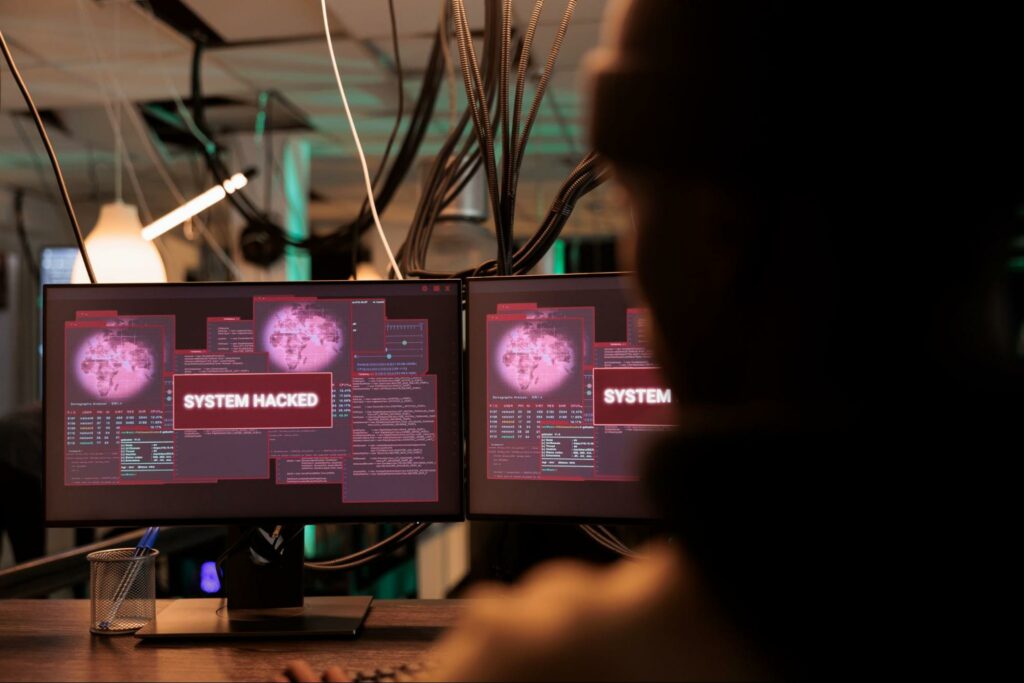What is Critical Infrastructure Cybersecurity: Solutions & Examples

1. Understanding Cybersecurity and Critical Infrastructure

Critical infrastructure refers to essential systems and assets, both physical and virtual, whose incapacitation or destruction would significantly impact society. This encompasses sectors like energy, water, transportation, healthcare, and financial services. As many of these infrastructures are now digitally controlled, they are vulnerable to cyber threats.
Thus, cybersecurity is not only about protecting information but also about safeguarding these essential services. Strong cybersecurity measures are imperative to shield our critical infrastructure from cyber attacks, ensuring uninterrupted services, economic stability, and public safety. In essence, the robustness of our cybersecurity determines the security and resilience of our critical infrastructure.
![]() See Also: Securing the Future: A Comprehensive Guide to OT Cybersecurity
See Also: Securing the Future: A Comprehensive Guide to OT Cybersecurity
2. Threats to Critical Infrastructure

The role of infrastructure security in the broader field of cybersecurity cannot be overstated. It is a frontline defense against cyber threats that seek to exploit vulnerabilities in our critical systems. However, this field faces numerous challenges, from the ever-evolving nature of cyber threats to the increasing complexity of our digital infrastructures.
Cyber threats to critical infrastructure can come in many forms, including malware, ransomware, phishing attacks, and denial-of-service attacks. These threats can exploit vulnerabilities in the digital systems that control our critical infrastructure, leading to potential disruptions or damage.
![]() See Also: An In-depth Look at Hardware-based Cybersecurity
See Also: An In-depth Look at Hardware-based Cybersecurity
2.1 Cyber Attacks on Critical Infrastructure
Recent years have seen a surge in cyber attacks targeting critical infrastructure. These attacks aim to disrupt essential services, steal sensitive data, or cause physical damage. The potential consequences of such attacks are far-reaching, affecting not just the targeted organizations but also the wider society that depends on these critical services.
For instance, in 2015, a cyber attack on Ukraine’s power grid led to a widespread power outage, affecting hundreds of thousands of people. In 2017, the WannaCry ransomware attack affected numerous organizations worldwide, including the UK’s National Health Service, leading to significant disruptions in healthcare services. These examples highlight the potential impact of cyber attacks on critical infrastructure.
![]() See Also: Unidirectional Gateway: Types, Benefits & Applications
See Also: Unidirectional Gateway: Types, Benefits & Applications
3. Protecting Critical Infrastructure

To counter these threats, a cybersecurity framework is often employed. It outlines best practices and standards for organizations to follow, helping them identify, protect, detect, respond to, and recover from cyber threats.
The US National Institute of Standards and Technology (NIST), for instance, has developed a cybersecurity framework that is widely used by organizations across various sectors. This framework provides a set of guidelines and best practices for managing cybersecurity risks, tailored to the specific needs of each organization.
Protecting critical infrastructure requires a multi-faceted approach. This includes implementing robust cybersecurity measures, such as firewalls and intrusion detection systems, as well as promoting cybersecurity awareness among employees. It also involves developing incident response plans to ensure a swift and effective response to cyber attacks.
Moreover, it requires a proactive approach to risk management. This involves continuously monitoring the cyber threat landscape, identifying potential vulnerabilities in the infrastructure, and taking preemptive measures to mitigate these risks. It also requires collaboration and information sharing among various stakeholders, including government agencies, private sector organizations, and international partners.
3.1 Critical Infrastructure Cybersecurity Examples
There are numerous examples of critical infrastructure cybersecurity in action. For instance, utility companies often employ advanced cybersecurity measures to protect their power grids from cyber attacks. These measures include the use of firewalls, intrusion detection systems, and encryption technologies to secure communication networks.
Similarly, financial institutions use sophisticated encryption technologies to secure their digital transactions. They also employ robust authentication mechanisms to verify the identity of users and prevent unauthorized access to their systems.
In the healthcare sector, hospitals and other healthcare providers use cybersecurity measures to protect patient data and ensure the integrity of their medical devices. These measures include the use of secure communication protocols, data encryption, and regular security audits.
These examples highlight the importance of cybersecurity in protecting our critical infrastructure and underscore the need for continuous innovation and adaptation in the face of evolving cyber threats.
![]() See Also: What is Industrial Cybersecurity: Control System & Solutions
See Also: What is Industrial Cybersecurity: Control System & Solutions
4. Cybersecurity Companies and Their Roles
Cybersecurity companies play a pivotal role in protecting critical infrastructure. They offer a range of solutions, from vulnerability assessments and penetration testing to incident response and recovery. These companies bring expertise and specialized knowledge to the table, helping organizations strengthen their cybersecurity defenses.
As a leading player in the field, we offer cybersecurity solutions tailored to the needs of critical infrastructure providers. Our contributions to critical infrastructure cybersecurity have been instrumental in enhancing the security and resilience of our most vital systems.
In conclusion, critical infrastructure cybersecurity is a vital aspect of our national security and resilience. It involves protecting our most essential systems from cyber threats, a task that requires robust cybersecurity measures, continuous vigilance, and a proactive approach.
![]() See Also: What are Data Diodes? How They Work in Cybersecurity
See Also: What are Data Diodes? How They Work in Cybersecurity

